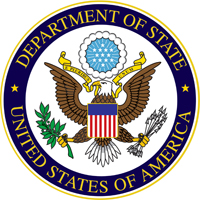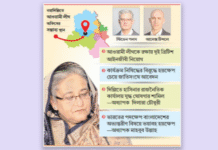Income gap between the rich and the poor widened in the last six years though per capita income increased significantly in the period in the country, according to the preliminary report of the Household Income and Expenditure Survey-2016.
The report shows that Gini co-efficient, which is used to measure income inequality, increased to 0.483 at national level in 2016 from 0.458 in 2010 meaning that the rich became richer while the poor poorer during the period.
The top 10 per cent households of the country held 38.16 per cent of national income in 2016, up from 35.84 per cent in 2010, the report shows.
On the other hand, only 1.01 per cent of the income went to the bottom 10 per cent of households in 2016 against 2 per cent six years ago, it says.
Income inequality in both rural and urban areas also widened during the period.
Consumption inequality, however, remained almost stable during the period.
Bangladesh Bureau of Statistics on Tuesday released the preliminary report of the survey known as HIES at a dissemination seminar held at BBS auditorium at Agargaon in Dhaka.
Planning minister AHM Mostafa Kamal attended the programme as chief guest.
According to the report, the country made significant achievement in poverty reduction in the years though the pace of poverty reduction slowed down.
The rate of extreme poverty declined to 12.9 per cent from 17.6 per cent in the six years while upper poverty line also dropped to 24.3 per cent from 31.5 per cent.
The report also shows that the patterns of food intake also changed during the period as consumption of rice, wheat and milk and milk products declined while intake of pulses, vegetables, fish, meat and egg increased.
Rice intake dropped to 367.19 gram per capita per day in 2016 from that of 416.01 gram in 2010.
BBS conducted the survey on 46,080 households across the country from April, 2016 to March 2017 to measure the income, consumption, expenditure, poverty, inequality and other basic indicators of socio-economic conditions of people.
This year the survey provided quarterly estimates of poverty and poverty rates at the district level along with annual estimation.
In previous years, the BBS estimated the poverty level at divisional level only.
The HIES is conducted usually every 5 years but the previous HIES was conducted in 2010 on 12,240 households.
According to the report, income per capita per month stood at Tk 3,936 in 2016,
up from Tk 2,553 in 2010.
Income per household at national level also increased to Tk 15,945 from Tk 11,479.
Total expenditure per household per month stood at Tk 15,715 in 2016, up from Tk 11,200 six years ago, the report said.
Consumption per household also increased to Tk 15,420 which was Tk 11,003.
Per capita income per month for rural and urban areas was Tk 3,256 and Tk 5,748 in 2016 against Tk 2,130 and Tk 3,741 respectively in 2010.
Experts and economists have said that the inequality widened as the bigger portion of income went to the richer groups of people while the poor got a minor share.
Lack of good governance, corruption, slower growth in employment and real wage also contributed to the widening income gap, they pointed out.
Former adviser to a caretaker government Mirza Azizul Islam finds the extent of inequality increased in the period insignificant as inequality generally increases along with economic growth.
The reason behind the widening inequality is slower growth in agricultural production along with higher growth in manufacturing and services sectors, he says, adding that wealthier people and skilled manpower people get the big portion of income from the sector.
World Bank lead economist in Dhaka Zahid Hossain also echoed Mirza Aziz.
Zahid said that the poor got small share of income as the share of agriculture in GDP growth declined.
Lack of good governance, quality employment, investment and problems in banking sectors and infrastructure also affected income distribution, he explained.
Dhaka University professor of economics MA Taslim said that the survey results proved that the economic development during the period was not poor-friendly.
At the report unveiling programme, planning minister AHM Mustafa Kamal said that the government would take various programme including imposition of higher tax on the rich and expansion of the social safety net to address the income inequality.
World Bank acting country director Rajashree S Paralkar, World Bank lead economist Zahid Hossain, Statistics and Informatics Division secretary KM Mozammel Hoq, BBS director general Amir Hossain, HIES project director Dipankar Roy, among others, spoke at the programme.
Source: New Age









